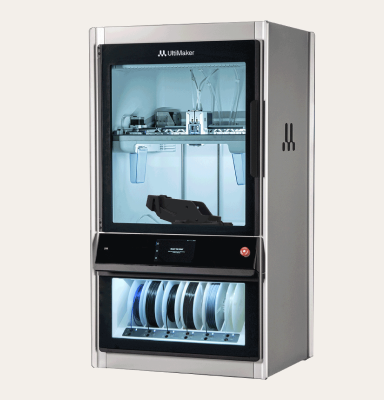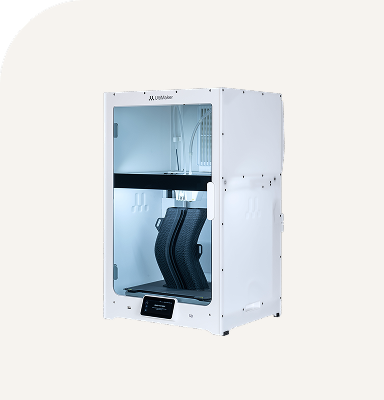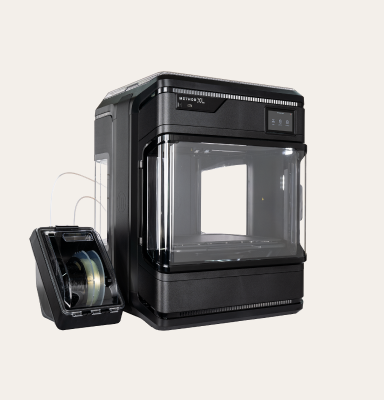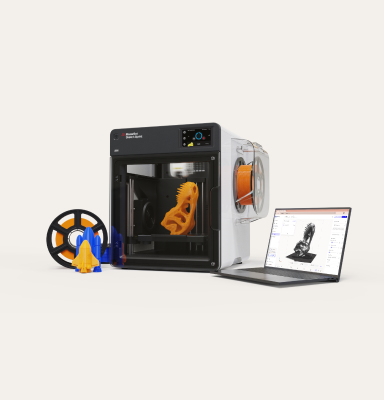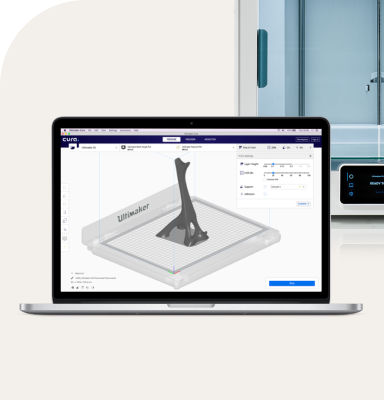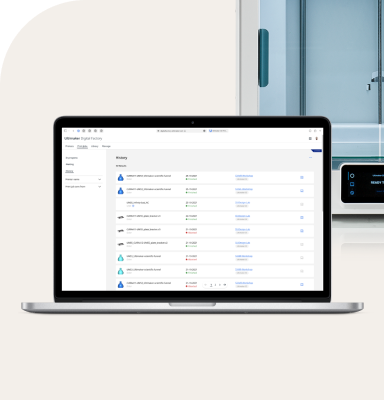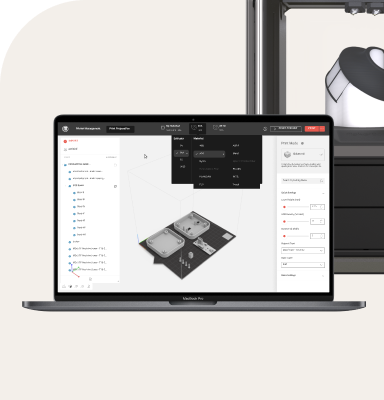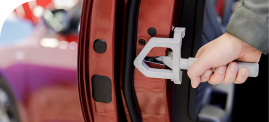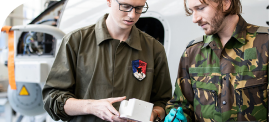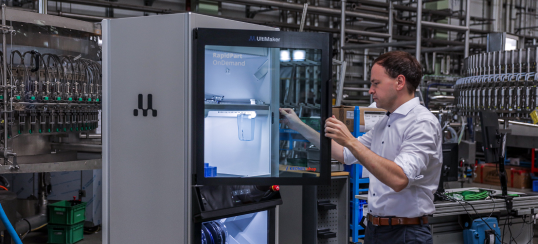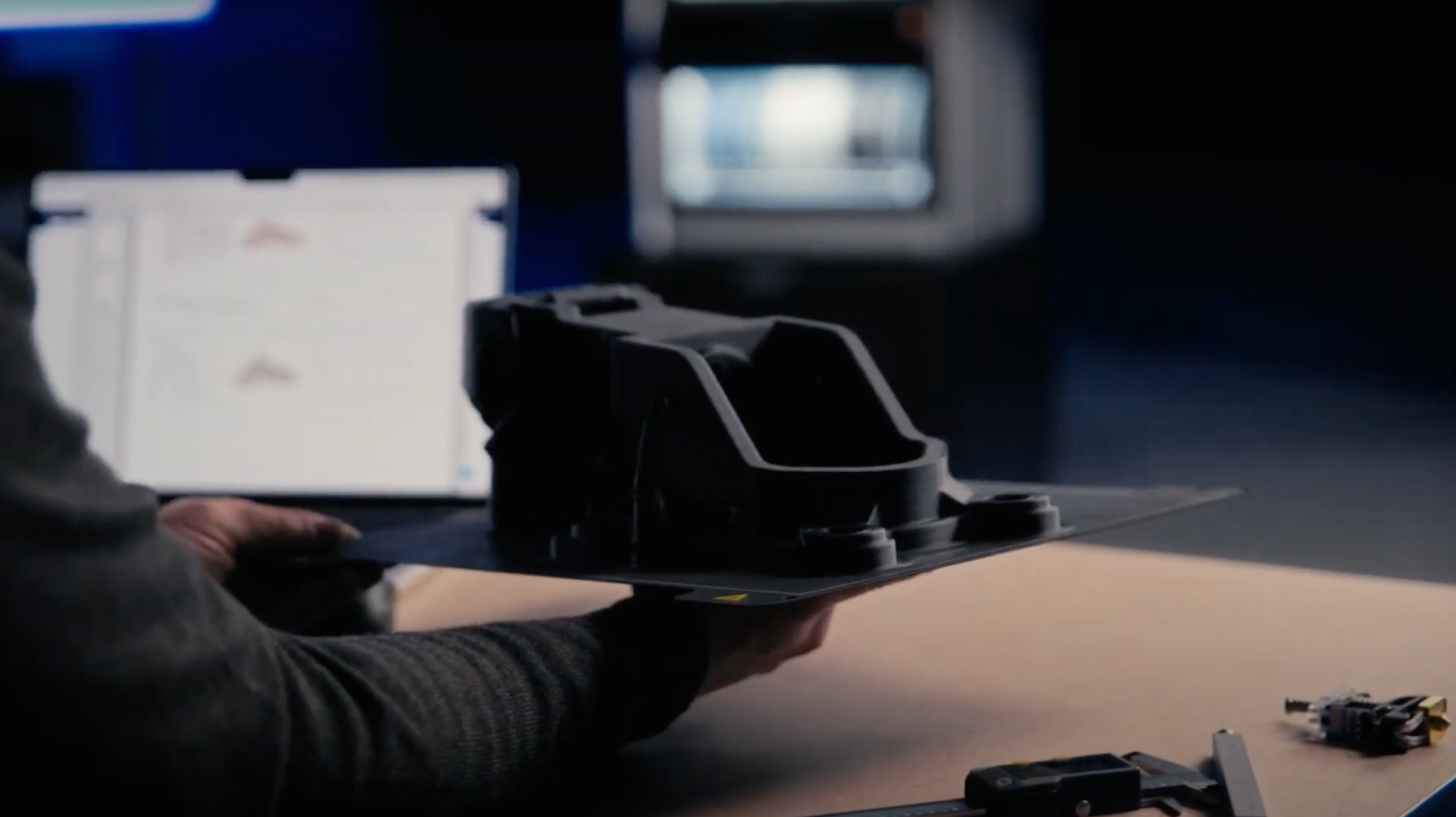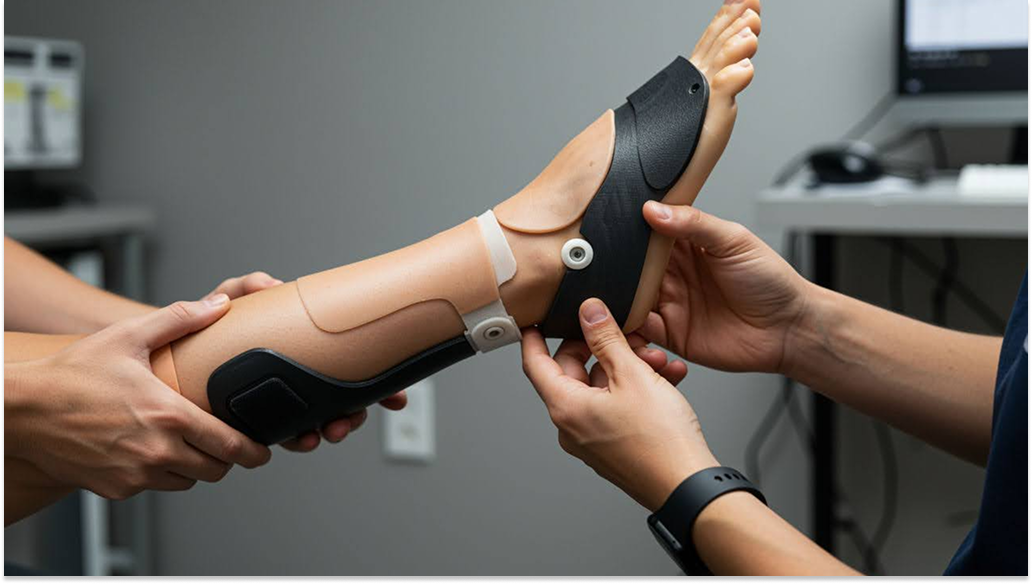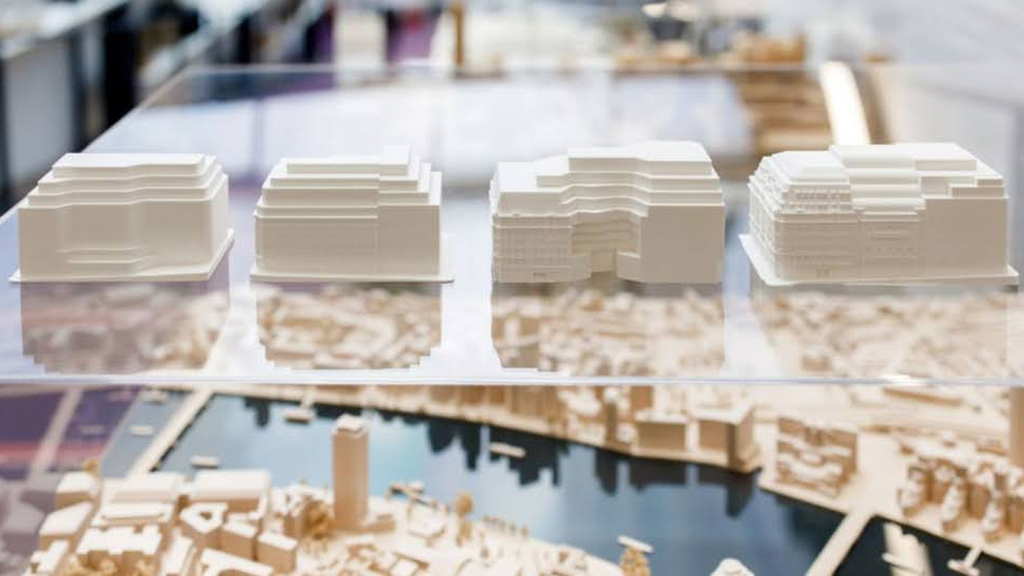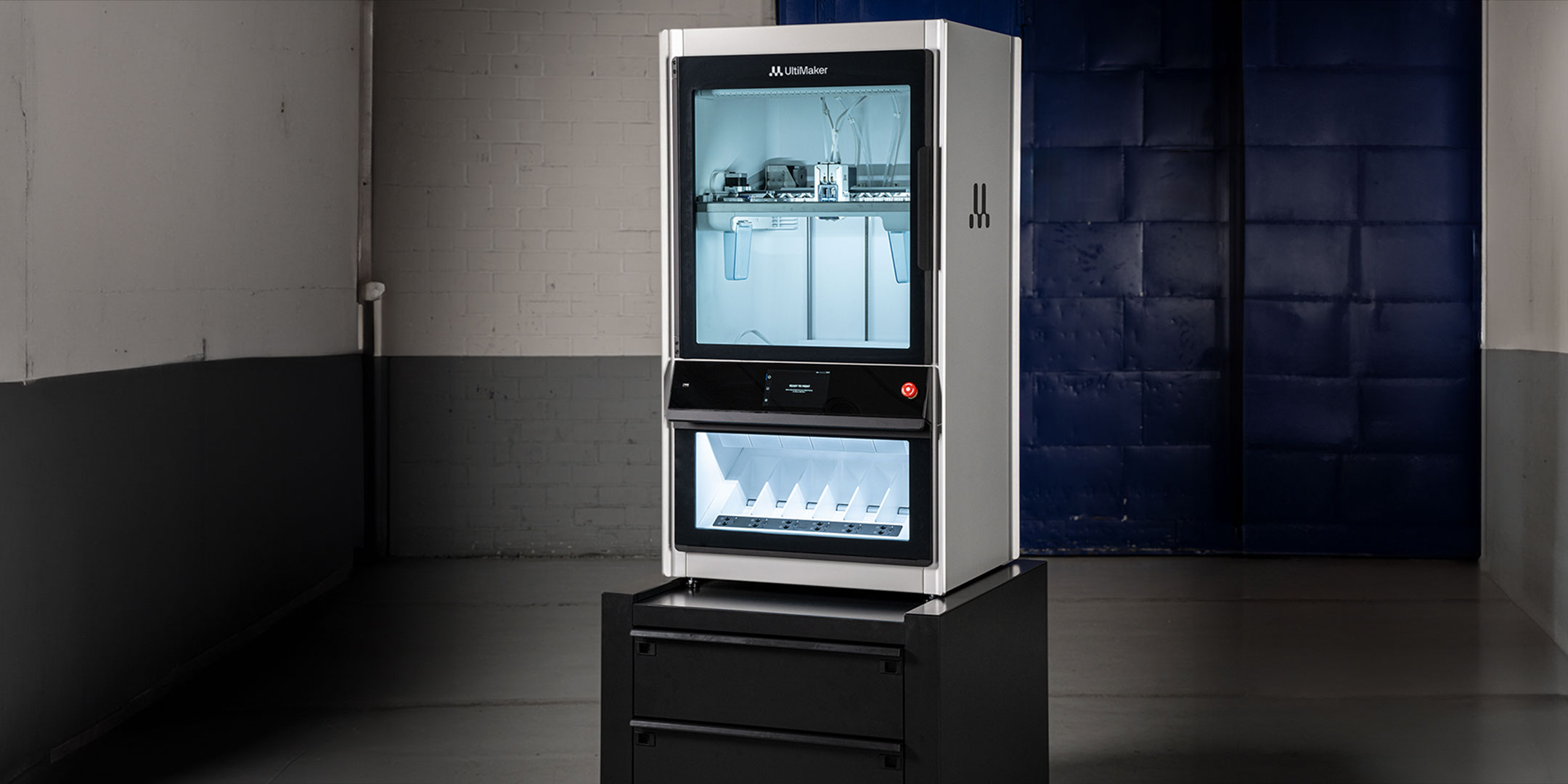Emerging applications: Food, architecture, and beyond
As we've explored the transformative impact of 3D printing across industries like aerospace, automotive, healthcare, and education, it's clear that this technology continues to push boundaries. In this section, we'll examine some of the more unexpected and innovative applications of 3D printing that are emerging, building on the core advantages we've discussed throughout this guide.
3D printing in culinary arts
While vastly different from manufacturing airplane parts or medical devices, 3D printing is finding its way into kitchens and restaurants:
- Custom Food Shapes: Chefs are using 3D printers to create intricate geometric designs with chocolate, sugar, and other malleable ingredients, elevating food presentation to new artistic heights.
- Personalized Nutrition: Building on the concept of customization we saw in medical applications, researchers are exploring ways to 3D print meals tailored to individual dietary needs and preferences.
- Alternative Protein Structures: As the plant-based meat industry grows, 3D printing is being used to create meat alternatives with textures that closely mimic animal proteins.
Architectural innovation
The construction industry is adopting 3D printing at various scales:
- Rapid Prototyping for Urban Planning: Similar to how automotive designers use 3D printing for concept models, urban planners and architects are creating detailed city models to visualize and test design ideas.
- 3D-Printed Buildings: Companies are developing large-scale 3D printers capable of extruding concrete to construct homes and other structures, potentially revolutionizing affordable housing solutions.
- Custom Architectural Elements: Leveraging the design freedom we've seen in other industries, architects are using 3D printing to create unique decorative elements and complex structural components.
Environmental applications
Innovators are applying 3D printing technology to address environmental challenges:
- Coral Reef Restoration: Researchers are 3D printing artificial coral structures designed to support marine life and help rebuild damaged reef ecosystems.
- Sustainable Materials Research: Building on material innovations mentioned in previous sections, scientists are developing 3D-printable materials made from recycled plastics and other sustainable sources.
- Wildlife Conservation: 3D-printed prosthetics, similar to those used in healthcare, are being created for injured animals, while custom tracking devices are helping researchers monitor endangered species.
Art and cultural preservation
The technology is opening new avenues for artistic expression and heritage conservation:
- Digital Sculpture: Artists are using 3D modeling and printing to create complex sculptures that would be difficult or impossible to produce with traditional methods.
- Artifact Replication: Expanding on applications in archaeology, museums are using 3D scanning and printing to create exact replicas of delicate artifacts for display or study.
- Interactive Exhibitions: Combining 3D printing with augmented reality technologies, museums are creating immersive, hands-on experiences for visitors.
Space exploration
Building on the aerospace applications discussed earlier, 3D printing is poised to play a crucial role in future space missions:
- In-Space Manufacturing: NASA and other space agencies are developing 3D printers that can operate in zero gravity, potentially allowing astronauts to produce tools and spare parts on demand during long-duration missions.
- Lunar and Martian Construction: Researchers are exploring ways to use 3D printing with local materials (regolith) to construct habitats on other planets, addressing the challenges of transporting building materials from Earth.
Fashion and wearable technology
Expanding on the consumer goods applications we explored, the fashion industry is pushing the boundaries of 3D-printed design:
- Avant-Garde Couture: Fashion designers are creating intricate, sculptural garments that showcase the unique capabilities of 3D printing.
- Smart Textiles: Researchers are developing 3D-printed fabrics with integrated sensors and electronics, blending the customization of 3D printing with the functionality of wearable technology.
Challenges and future outlook
As with the more established applications we've discussed, these emerging uses of 3D printing face several challenges:
- Regulatory Frameworks: Many of these novel applications, particularly in food and construction, require new safety standards and regulations.
- Material Development: Each new application often requires specialized materials, driving ongoing research in this area.
- Scalability: While many of these applications show promise in small-scale demonstrations, scaling up to practical, widespread use remains a challenge.
Looking ahead, we can expect to see:
- Continued cross-pollination of ideas between industries, as innovations in one field inspire applications in others.
- Increased focus on sustainability, with 3D printing potentially playing a key role in circular economy initiatives.
- Further integration of 3D printing with other emerging technologies like artificial intelligence, robotics, and the Internet of Things, leading to even more innovative applications.
As we conclude this comprehensive guide to 3D printing applications, it's clear that the technology's impact extends far beyond its origins in rapid prototyping. From revolutionizing traditional industries to enabling entirely new forms of creativity and problem-solving, 3D printing continues to shape our world in unexpected and exciting ways.
Challenges and limitations of 3D printing in industry
While the previous sections have highlighted the numerous advantages and applications of 3D printing across various industries, it's important to acknowledge the challenges and limitations that still exist. As with any transformative technology, 3D printing faces obstacles that must be addressed for its continued growth and adoption in industrial settings.
Material limitations
Although we've discussed the expanding range of 3D printable materials, limitations persist:
- Material Properties: Some 3D printed parts may not match the strength, durability, or heat resistance of traditionally manufactured components, particularly in demanding aerospace or automotive applications.
- Multi-material Printing: While progress has been made, seamlessly combining multiple materials in a single print remains challenging, limiting certain functional applications.
- Cost: Specialized 3D printing materials can be significantly more expensive than traditional manufacturing materials, impacting the economic viability of some applications.
Production speed and scale
As mentioned in the automotive section, 3D printing still faces challenges in high-volume production:
- Build Times: For large or complex parts, 3D printing can be significantly slower than traditional mass production methods like injection molding.
- Batch Sizes: While ideal for customization and small runs, 3D printing becomes less cost-effective as production volumes increase, limiting its use in mass manufacturing scenarios.
Design and engineering challenges
While 3D printing offers unprecedented design freedom, it also presents new challenges:
- Design for Additive Manufacturing (DfAM): Engineers must learn new design principles to fully leverage the capabilities of 3D printing while avoiding its limitations.
- Support Structures: Many 3D printing processes require support structures for overhanging features, which can impact surface finish and require post-processing.
- File Preparation: Converting 3D models to printable files and optimizing print settings can be time-consuming and requires specialized expertise.
Regulatory and certification hurdles
As discussed in the aerospace and medical sections, regulatory challenges persist:
- Industry Standards: The development of comprehensive standards for 3D printed parts, especially for critical applications, is still ongoing.
- Certification Processes: Certifying 3D printed parts for use in regulated industries like aerospace and healthcare can be complex and time-consuming.
- Intellectual Property: The ease of replicating 3D printed designs raises new challenges in protecting intellectual property. However, with secure digital solutions such as Digital Factory and cloud slicing, your intellectual property will be kept safe.
Future outlook
While these challenges are significant, ongoing research and development are addressing many of these limitations:
- Material Science Advancements: New materials and composites are being developed to improve the mechanical properties and expand the applications of 3D printed parts.
- Process Innovations: Emerging technologies like continuous liquid interface production (CLIP) promise faster print speeds and improved surface finishes.
- AI and Machine Learning Integration: Advanced software tools are being developed to optimize design for 3D printing and improve process control and quality assurance.
- Hybrid Manufacturing: Combining 3D printing with traditional manufacturing methods is allowing companies to leverage the strengths of both approaches.
As these challenges are addressed, we can expect to see even broader adoption of 3D printing across industries, unlocking new possibilities for innovation and efficiency in manufacturing. The next section will explore some of the exciting future trends and innovations on the horizon for industrial 3D printing.
Future trends and innovations in industrial 3D printing
As we've explored the diverse applications and challenges of 3D printing across various industries, it's clear that this technology continues to evolve rapidly. Building on the foundation laid in previous sections, let's examine some of the most promising trends and innovations that are shaping the future of industrial 3D printing.
Advanced materials and multi-material printing
While material limitations were noted as a challenge in the previous section, significant advancements are on the horizon:
- Metamaterials: Researchers are developing 3D-printable materials with properties not found in nature, such as negative Poisson's ratio materials that become thicker when stretched.
- Gradient Materials: Building on the concept of functionally graded materials mentioned in the industrial manufacturing section, new processes are enabling seamless transitions between different materials within a single part.
- Bio-inspired Materials: Drawing inspiration from nature, scientists are creating 3D-printable materials that mimic the strength and lightweight properties of structures like bone or spider silk.
Artificial Intelligence and Machine Learning integration
AI and ML are set to revolutionize various aspects of the 3D printing process:
- Generative Design: AI algorithms can create optimized part designs based on specified performance criteria, pushing the boundaries of what's possible with additive manufacturing.
- Process Optimization: Machine learning models are being developed to predict and prevent print failures, addressing some of the quality control challenges mentioned earlier.
- Autonomous Manufacturing: Integration of AI with robotic systems is paving the way for lights-out manufacturing facilities where 3D printers operate with minimal human intervention.
High-speed and large-scale printing
Addressing the production speed and scale limitations discussed previously:
- Continuous Liquid Interface Production (CLIP): This technology, briefly mentioned in earlier sections, promises print speeds up to 100 times faster than traditional layer-by-layer approaches.
- Robotic 3D Printing: Multi-axis robotic arms equipped with 3D printing extruders are enabling the creation of large-scale structures without the size limitations of traditional gantry-based printers.
- Parallel Processing: New systems with multiple print heads working simultaneously are dramatically increasing production capacity for smaller parts.
4D printing and programmable materials
Taking the concept of 3D-printed customization to a new level:
- Shape-Shifting Objects: 4D printing involves creating 3D-printed objects that can change shape or properties over time in response to environmental stimuli like heat, moisture, or light.
- Self-Assembling Structures: Building on applications in space exploration mentioned earlier, researchers are developing 3D-printed components that can assemble themselves into larger structures.
- Adaptive Products: In consumer goods and medical applications, 4D printing could lead to products that adapt to user needs or environmental conditions over time.
Bioprinting advancements
Expanding on the medical applications discussed previously:
- Organ Printing: While still in early stages, progress is being made towards 3D printing functional human organs for transplantation.
- In-Situ Bioprinting: Researchers are developing portable bioprinters that could print tissue directly onto wounds or inside the body during surgery.
- Lab-Grown Meat: Building on the food printing applications mentioned earlier, 3D bioprinting is being explored as a method for creating cultured meat products at scale.
Sustainable and circular manufacturing
Addressing some of the environmental concerns raised in the previous section:
- Recycled and Bio-based Materials: New filaments made from recycled plastics or renewable bio-based sources are reducing the environmental impact of 3D printing.
- Closed-Loop Systems: Manufacturers are developing processes to recycle failed prints and support materials back into usable filament, moving towards zero-waste production.
- Energy-Efficient Processes: Innovations in printer design and material formulations are reducing the energy consumption of 3D printing processes.
Standardization and certification
To address the regulatory challenges mentioned earlier:
- Industry-Specific Standards: Organizations like ASTM International and ISO are developing comprehensive standards for 3D printing processes and materials across various industries.
- Digital Certification: Blockchain and other technologies are being explored to create tamper-proof digital threads that can certify the provenance and quality of 3D-printed parts.
- In-Situ Monitoring: Advanced sensors and imaging technologies are enabling real-time quality assurance during the printing process, potentially streamlining certification procedures.
Conclusion and future outlook
As these trends and innovations continue to develop, we can expect to see 3D printing become an even more integral part of industrial manufacturing processes. The technology is likely to enable new business models, such as distributed manufacturing networks and mass customization at unprecedented scales.
However, realizing the full potential of these advancements will require continued collaboration between researchers, industry leaders, and policymakers. As 3D printing technologies mature, they will likely converge with other emerging technologies like the Internet of Things, augmented reality, and advanced robotics, creating new paradigms for how we design, produce, and consume products.
The journey of 3D printing from a rapid prototyping tool to a transformative manufacturing technology has been remarkable, and its future promises to be even more exciting. As industries continue to explore and push the boundaries of what's possible with additive manufacturing, we can anticipate groundbreaking innovations that will reshape our world in ways we're only beginning to imagine.
The Factor 4 industrial-grade 3D printer streamlines production, simplifies processes, and keeps operations running.
If you want to know how UltiMaker’s Factor 4 printer can help you change the game for your business, don’t hesitate to contact us and our team of experts will be more than happy to reach out to you and help!

